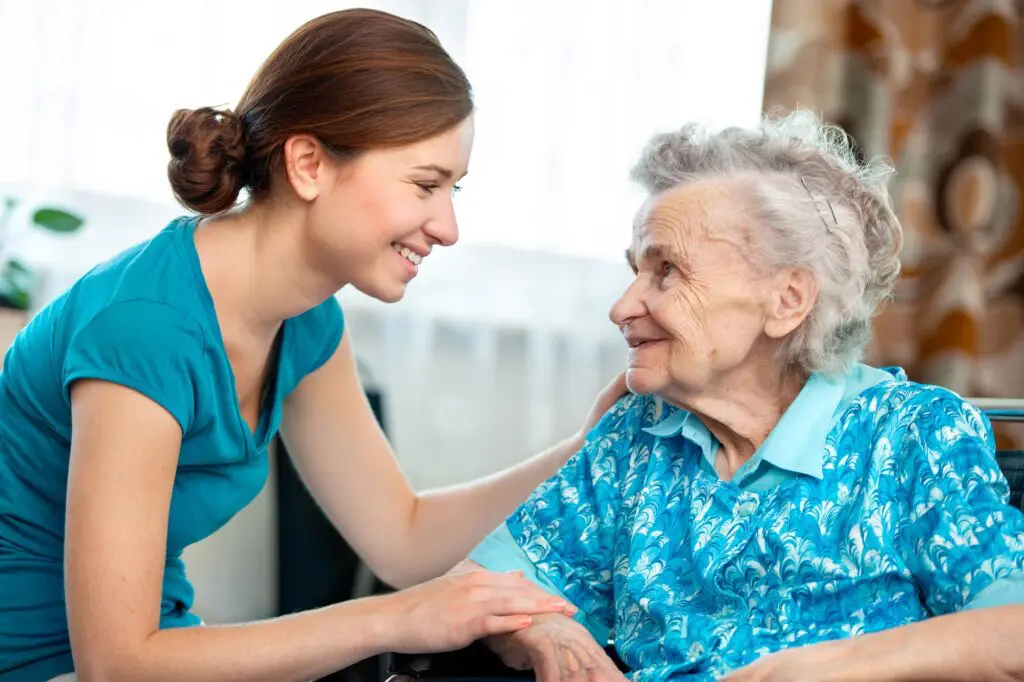Caregiver Activities, Duties, and Responsibilities

Caregiving is a demanding yet rewarding role that encompasses a wide range of activities, duties, and responsibilities. Caregivers ensure the well-being, safety, and comfort of their care recipients, who may be individuals of any age with varying needs due to illness, disability, or age-related challenges. Here are some of the responsibilities and duties of a caregiver.
Meals
Caregivers assess dietary requirements, considering any health conditions or restrictions, and plan balanced menus accordingly. Caregivers then take charge of grocery shopping and meal preparation, ensuring that the food aligns with the individual’s specific dietary needs. During mealtime, they provide assistance with feeding if required, offering both physical support and companionship. This can be particularly vital for individuals with mobility or coordination challenges.
Moreover, caregivers monitor food intake, keeping a watchful eye on nutritional adequacy and hydration levels. They adapt their approach based on the individual’s preferences and any changes in health status. Beyond the nutritional aspect, caregivers foster a positive dining environment, encouraging social interaction and emotional well-being during meals. In essence, caregivers contribute not only to the physical nourishment but also to the overall enjoyment and holistic health of those under their care.
Caregivers also possess culinary skills and knowledge to prepare meals that are both nutritious and appealing to the care recipient. They consider factors such as texture, taste, and presentation to ensure that the care recipient enjoys their meals.
Clothing
Caregivers provide comprehensive support in managing clothing needs for their care recipients, ensuring that they are dressed appropriately and comfortably for various occasions. They consider the weather, activities, and personal style of the care recipient when selecting clothing. They also carefully lay out outfits, ensuring that the clothing is clean, comfortable, and appropriate for the occasion.
Caregivers may assist with dressing and undressing, especially for those with limited mobility or physical limitations. They provide support and guidance to ensure that the care recipient is dressed appropriately and feels comfortable.
Caregivers also take responsibility for maintaining the care recipient’s clothing, ensuring that it is clean, comfortable, and well-maintained. They may handle laundry tasks or arrange for laundry services to keep the clothing in good condition.
Communication
Caregivers practice active listening to fully comprehend the care recipient’s communication. They pay attention to both verbal cues, such as words and tone of voice, and non-verbal cues, such as body language and facial expressions.
Caregivers also communicate clearly and concisely, using simple language that is easy for the care recipient to understand. They avoid using medical jargon or technical terms that may be confusing.
In addition, caregivers maintain open communication with healthcare providers, such as doctors, nurses, and therapists, to ensure that the care recipient’s needs are met effectively. They also collaborate with other professionals involved in the care recipient’s well-being, such as social workers or case managers.
Moreover, caregivers regularly communicate with family members, providing updates on the care recipient’s progress, addressing any concerns, and involving them in decision-making processes. They maintain open and transparent communication to ensure that everyone involved feels informed and supported.
Pet Care
For individuals who have pets, caregivers may provide care for them as well, ensuring that their furry companions receive proper attention and affection.
Caregivers ensure that pets receive adequate nutrition by feeding them on a regular schedule and providing them with fresh water. They also take pets for walks to provide exercise and mental stimulation, and they regularly groom pets to maintain their hygiene and comfort.
Most caregivers schedule and accompany pets to veterinary appointments for routine checkups, vaccinations, and any necessary medical treatments. They communicate with veterinarians to ensure that pets receive proper care. Caregivers also provide pets with clean water, entertaining toys, and a safe and comfortable living environment.
The most important tip is to find a reputable caregiver. Job Info can help you to get started. Contact us for more information.
